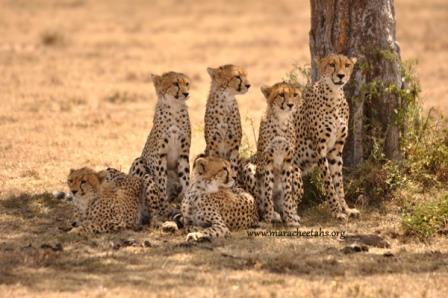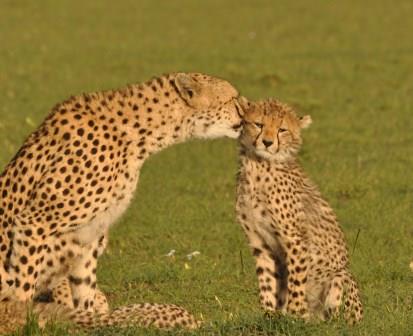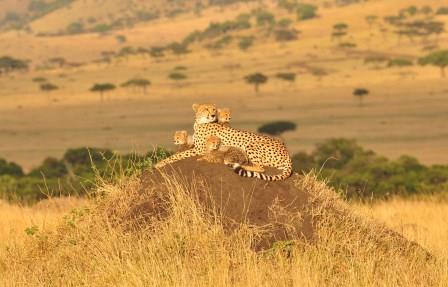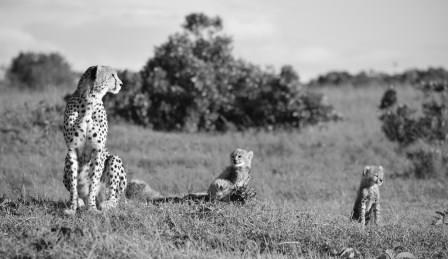News
The impact of habitat and tourist abundance on cheetah cub survival
New research from Kenya shows that both open habitat and the number of tourists could have a negative impact on the number of cubs that survive to independence. The study was carried out by WildCRU’s Femke Broekhuis in the Maasai Mara using over four years of data on individually recognised cheetahs.
Cheetahs have experienced drastic population declines with only an estimated ~7000 mature individuals left in Africa. One key parameter for population growth is the number of cubs that survive to independence. Cheetahs have relatively big litters, ranging between one to six cubs, perhaps to compensate for the high mortality they suffer during their first year. While there is no doubt that lions, spotted hyaenas and smaller predators kill cheetah cubs, other factors such as habitat and tourists have also been found to play a role in cub survival.
Although cheetahs are commonly perceived to be open plains specialists, the study showed the importance of closed habitats. Cheetahs in denser habitat typically raised three cubs to independence whereas those in open habitats typically raised less than two. Open plains provide few places to hide, which is especially important for cubs. This means that the chances of cubs being killed or a meal being stolen by another predator are likely to be higher on the open plains compared to more wooded habitats.
The study also found that females in areas with a lot of tourists on average raised one cub or less per litter to independence compared to two or more cubs in low tourist areas. During the study there was no hard evidence of direct mortality caused by tourists. It is therefore possible that tourists have an indirect effect on cub survival by changing a cheetah’s behaviour, increasing a cheetah’s stress levels or by minimising food consumption.
While this study shows that high tourist abundance has a negative impact on cheetah cub recruitment, tourism also plays an important, positive role in cheetah conservation through, for example, the creation and maintenance of protected areas and wildlife conservancies and positively influencing attitudes of local people towards predators. However, cub recruitment is important for the persistence of cheetah populations and it is worrying that tourists may be having a negative impact. The findings of this study highlight the importance of implementing and enforcing strict wildlife viewing guidelines, especially in areas where tourist numbers are high. Actions that could be taken to ensure that tourists do not have a negative impact on cheetahs include:
- – allowing no more than five vehicles at a cheetah sighting
- – ensuring that no tourist vehicles are allowed near a cheetah lair (den)
- – ensuring that vehicles keep a minimum distance of 30m at a cheetah sighting
- – ensuring that noise levels and general disturbance at sightings are kept to a minimum
- – ensuring that vehicles do not separate mothers and cubs and that
- – cheetahs on a kill are not enclosed by vehicles so that they can detect approaching danger.
These guidelines would ideally be incorporated into management policies and distributed to tourists and guides, with rangers ensuring that these guidelines are respected.
This research, which was financially supported by the African Wildlife Foundation, BAND Foundation, Vidda Foundation and private donations made through the Kenya Wildlife Trust, was recently published in Ecology and Evolution.
-
 © Femke Broekhuis
© Femke Broekhuis -
 © Femke Broekhuis
© Femke Broekhuis -
 © Nic Elliot
© Nic Elliot -
 © Kosiom Keiwua
© Kosiom Keiwua





